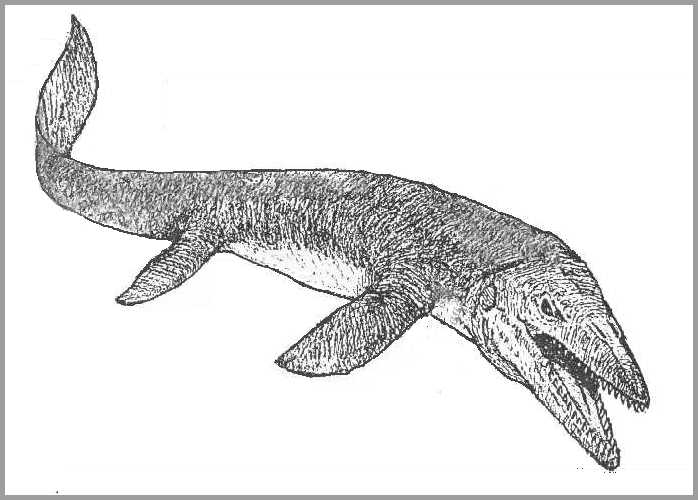
MOSASAUR RELATIONSHIPS
Written by Darren Naish; used with permission Copyright © 1998-2009
Last updated: 09/07/2009
 |
MOSASAUR RELATIONSHIPS Written by Darren Naish; used with permission Copyright © 1998-2009
Last updated: 09/07/2009 |
Mosasauroids (mosasaurids and all of their close relatives) are platynotan lizards that, in the most recent analyses, share 40 shared derived characters with snakes (Ophidia) - therefore they share a single ancestor and form the clade Pythonomorpha Cope, 1869. Varanids and lanthanotids (Bornean earless monitor and extinct relatives) form a clade and out-group to pythonomorphs: the varanid-lanthanotid clade is not named as far as I know, but (varanids + lanthanotids) + pythonomorphs are the Thecoglossa. Helodermids/helodermatids (Gila monsters, etc) out-group to thecoglossans.
So... mosasaurs are not actually as close to monitors as used to be implied - the case constructed by palaeo-herpetologists Mike Lee and John Scanlon is pretty much concrete, and most of the workers I've spoken to that are aware of this work support it virtually 100%. Mosasaurs are most closely related to snakes. As you may note by the fact that Cope named Pythonomorpha for this very clade way way back in 1869, the idea is not new and striking mosasaur-snake similarities (e.g. zygosphene-zygantrum articulations) have been generally overlooked because few workers ever had the time or incentive to include mosasaurs and snakes in the same analysis.
The description or re-description in recent years of basal snakes (Pachyrhachis in particular, and also the madtsoiids) - animals that turn out to be so 'lizard'-like that workers have had to keep looking further back in the squamate tree - has contributed to this approach. Basal snakes have articulated pelves and hindlimbs and were marine. That mosasauroids are all marine argues that the first pythonomorph was too. Madtsoiids (most primitive snakes after Pachyrhachis etc.) were still 'wet' and I reckon they were amphibious, while post-madtsoiid snakes adapted to full terrestriality and underwent a fossorial stage (hence those funny eyes!).
The full text of this comment is available at:
Archives of the DINOSAUR mailing list